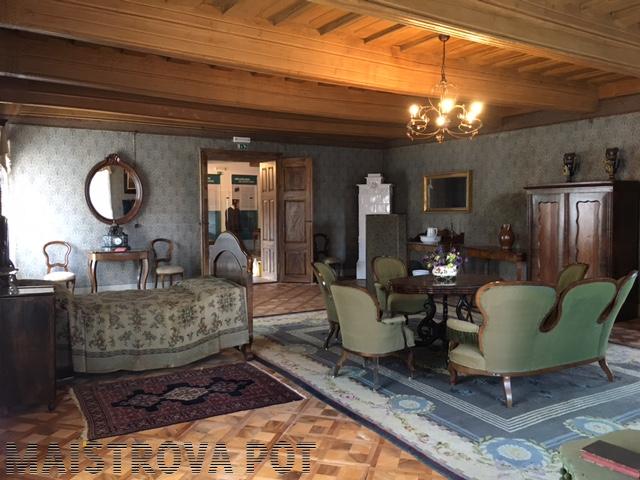Grad Snežnik
Between 1921 and 1923, General Rudolf Maister chaired the Yugoslav boundary commission on the border between the Kingdom of Serbs, Croats and Slovenes and the Kingdom of Italy, as it had been delineated by the peace treaty between the two states, signed on 12 November 1920 in Rapallo. The demarcation line between Mangart in the northwest and Rijeka in the southeast ran near Snežnik Castle, where General Maister resided during his term of office – Battle for the borders – the Rapallo border. He set up his temporary residence and office on the second floor of the castle. Hermann von Schöenburg-Waldenburg, the owner of the estate and Snežnik Castle, described Maister very critically in his memoirs.
“Finally, in the summer of 1920, I was given permission to come to Snežnik, but only as a guest of the government. […] During my first visit to Snežnik, the castle was filled to bursting with members of the military commission for demarcation, partly also with their wives. The commission was headed by the infamous “General” Maister, the hyena of Maribor. […] Later the General and his staff came for a ceremonious visit to my living room (I was given use of the first floor) and I returned the visit in the large guest room on the second floor, where the General was residing. As the General and some officers from the former Austrian lands knew only German in addition to their mother tongues and the Serbs present only French in addition to Serbo-Croat, the conversation took place in such a way that I spoke German or French with one group, while the other group sat there quietly, understanding nothing.”
After the work was completed, on 2 October 1923, the boundary commission was dissolved and General Maister was forced into retirement with the rank of divisional general.


